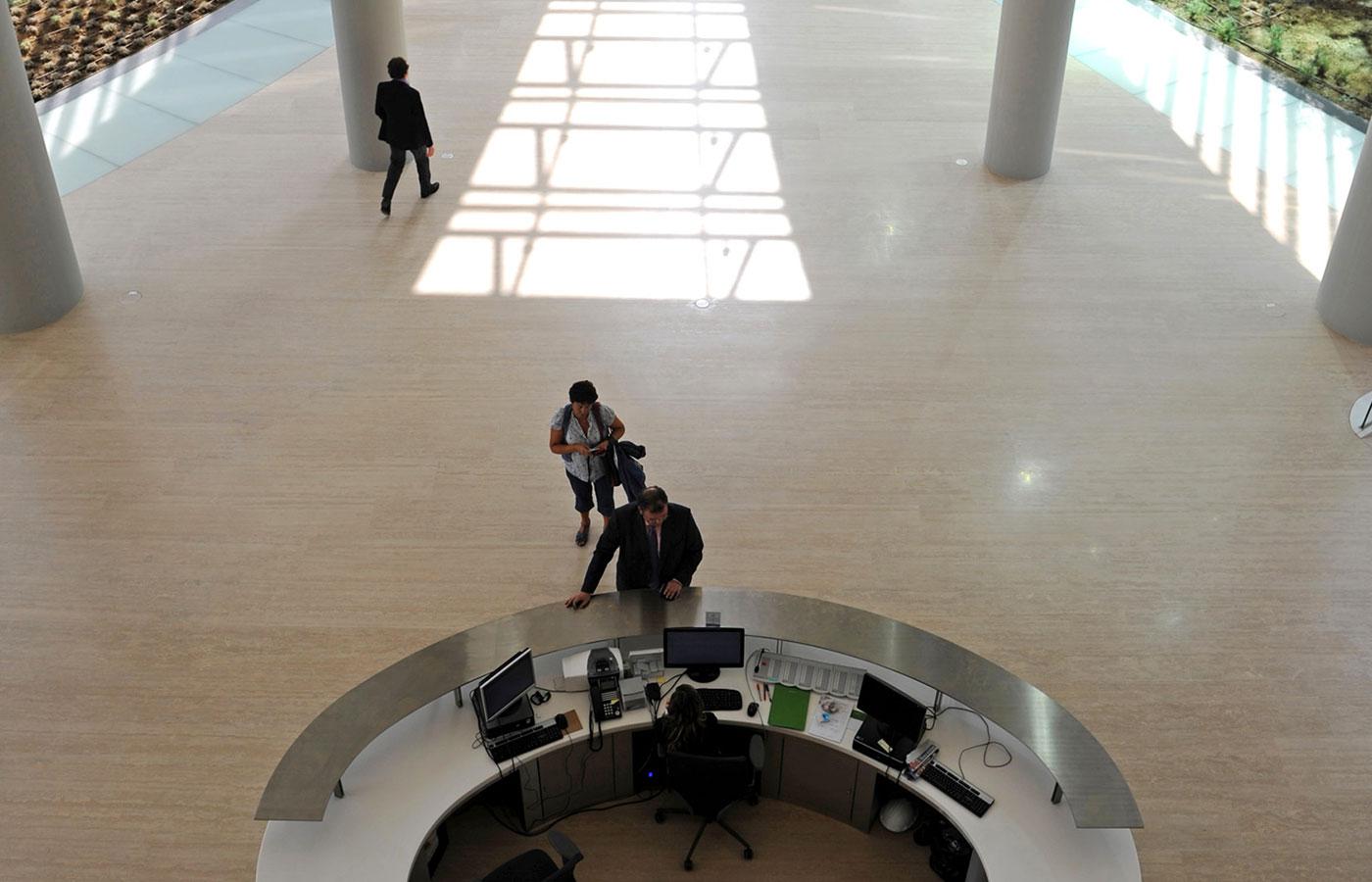Risk management within the Iberdrola group is based on foresight, independence, commitment to the group’s business objectives and the engagement of senior management and the Board.
Commitment of the Board of Directors and of senior management
Iberdrola’s Board of Directors and senior management is strongly committed to and engaged in the management of the group’s risks:
- Ex-ante: acceptable levels of risk tolerance are reviewed and approved on an annual basis through risk policies and limits that establish the qualitative and quantitative risk appetite at the group level and at each of the main businesses and corporate functions.
- Ex-post: periodic monitoring of significant risks and threats and the various exposures of the group, as well as of compliance with the approved risk policies, limits and indicators.
Comprehensive Risk Control and Management System
The General Risk Control and Management Policy, of the group approved by the Board of Directors establishes the mechanisms and basic principles for appropriate management of the risk/opportunity ratio, at a risk level that makes it possible to:
- Attain strategic goals with controlled volatility.
- Provide the maximum level of assurance.
- Protect the results and reputation of the group.
- Defend the interests of the Stakeholders and guarantee the business stability and financial strength of the group.
At the operational level, the Comprehensive Risk Control and Management System is structured around a Risk Committee and an independent specialised Risk Division that analyses and quantifies the risks within the main businesses of the group.
Duties of the Risk Division
| Active management |
|---|
| Credit risk. Approval of counterparties and limits and/or establishment of admission criteria in order to minimise credit losses within the group. Market risk. Approval of detailed limits in order to delimit the effects of volatility in the markets in which the group operates. |
| ERM* focus |
|
Ensure that there are mechanisms for all significant risks of the group to be adequately identified, measured, managed and controlled at all times and that they are regulary reported reported to the various committees. Instruments and reports:
|
| Operational risk is centrally managed through the group’s corporate Insurance, Information Technology and Cybersecurity units. |
(*) ERM: Enterprise Risk Management.
Risk policies and limits of the Iberdrola group.
The General Risk Control and Management Policy is further developed and supplemented with specific policies established in relation to certain risks, corporate functions or businesses of the group, which are also annually approved by the Board of Directors at the head of the group, and which are as follows:
Specific risk policies for the various businesses of the group:
- Risk Policy for the Wholesale and Retail Businesses of the Iberdrola group.
- Risk Policy for the Renewable Energy Businesses of the Iberdrola group.
- Risk Policy for the Networks Businesses of the Iberdrola group.
- Risk Policies for the Real Estate Business.
Corporate risk policies::
- Corporate Credit Risk Policy.
- Corporate Market Risk Policy.
- Operational Risk in Market Transactions Policy.
- Insurance Policy.
- Investment Policy.
- Financing and Financial Risk Policy.
- Treasury Share Policy.
- Risk Policy for Equity Interests in Listed Companies.
- Reputational Risk Framework Policy.
- Procurement Policy.
- Information Technologies Policy.
- Cybersecurity Risk Policy.
The country subholding companies adopt the group’s risk policies and specify the application thereof, approving the guidelines on specific risk limits, based on the nature and particularities of the businesses in each country. The listed country subholding companies, under their own special framework of strengthened autonomy, approve their own risk policies.
Principal risk factors of the Iberdrola group
The group is exposed to various risks inherent in the different countries, industries and markets in which it operates, and which may prevent it from achieving its objectives and implementing its strategies. These risks are grouped into:
Credit risks: possibility of contractual breach by a counterparty, causing economic or financial losses.
Market risks: exposure to volatility in variables like prices of electricity and other energy commodities, exchange rate, interest rate, etc.
Business risks: deriving from the uncertainty of the behaviour of variables intrinsic to the business, characteristics of demand, climatology, etc.
Operational, Technological, Environmental, Social and Legal Risks: economic losses resulting from inadequate internal procedures, technical failures, human errors, climate change, etc.
Political and regulatory risks: coming from regulatory changes made by the regulators that can affect remuneration of the regulated businesses, environmental or tax provisions, etc.
Reputational risks: potential negative impacts on the company arising from performance below the expectations of its Stakeholders.
Corporate governance risks: those that endanger the corporate interest and strategy of the company.
Risk factors and mitigation measures
Greater detail is offered below regarding the main risk factors for the income statement of a specific financial year and the main measures of mitigation to address them.
| Price and demand risks | ||||
|---|---|---|---|---|
| Changes in the price of electricity | The main variable affecting the results of the group’s Wholesale and Retail Businesses as regards market prices is the price of electricity, which relatively corresponds to the price of fuel and applicable emission rights, required to produce such electricity. | |||
| The group’s Renewables Businesses preferentially sell their energy at: i) regulated tariff; or ii) fixed price via PPAs. The remaining market exposure of the Spain and United Kingdom Renewables Businesses is transferred to the Wholesale and Retail Business of such countries. | ||||
| Changes in energy commodity prices | Offsetting at-risk positions between wholesale and retail activities allows for a large reduction in the group’s market risk; the remaining risk is mitigated via diversification of purchase/sale agreements and the specific clauses thereof, and by trading in derivatives. | |||
| Possible impact of a 5% change in the price of electricity and/or of energy commodities and CO2 | – Spain | Integrated Wholesale, Retail and Renewables Risk (Windfarms prior to 2004) | ||
| – United Kingdom | Integrated Wholesale, Retail and Renewables Risk (power component of wind farms subject to ROCs) | |||
| – Mexico | The PPAs with the CFE do not have a market risk | |||
| – United States | For windfarms exposed to the market | |||
| Change in demand | Higher or lower growth in annual demand has a moderate short-term impact on the group’s results, given the characteristics of the group’s generation facilities and the structure of the long-term power purchase agreements. | Possible impact of 1% reduction in demand | Wholesale and Retail Spain Wholesale and Retai United Kingdom |
|
| Resource risks | ||||
| Change in hydroelectric resources Spain | In the long term, wet years compensate for dry years. In the short-to-medium term, the storage capacity of multi-year reservoirs and the group’s portfolio of power plants mitigate the level of volatility of the annual results. |
Possible impact of lower hydroelectric production (*) | Spain Wholesale and Retail Business | |
| Change in wind resources of the group | The geographical spread of the Iberdrola group’s wind farms mitigates the annual volatility of wind production at the group level and its possible impact on results for a specific year. | Possible impact of lower wind production | Group Renewables Business | |
| (*) Corresponding to dry year, followed by two dry or semi-dry years. | ||||
| Financial risks | ||||
| Change in interest rate | In order to mitigate this risk, the Iberdrola group maintains a fixed-rate and variable-rate debt structure, based on the structure of its revenues and the sensitivity thereof to changes in interest rates. | Possible impact on financial cost of +25 bps increase | Group financial cost | |
| Change in exchange rate | The group mitigates this risk by taking on debt and carrying out all its financial flows in the functional currency corresponding to each company, whenever possible and economically efficient, and managing its open positions with financial derivatives. The risk associated with the translation of expected results from subsidiaries in a currency other than the euro is closed out annually. | Possible impact on financial cost of 5% increase in currency | Group financial cost | |
| Other risks | ||||
| Credit risk | This risk is appropriately managed and limited based on the type of transaction and the credit standing of the counterparties. As regards the credit risk of accounts receivable for retail activity, late payments/defaults have been kept to moderate levels, close to 1% of the total invoicing for this activity. | |||
| Operational risk | These risks are mitigated by making the necessary investments, applying operation and maintenance procedures and programmes (supported by quality systems), planning appropriate training and skills development for staff, and finally by obtaining appropriate casualty and civil liability insurance. | |||
| Regulatory and political risk | The group is subject to laws and regulations on tariffs and other regulatory aspects of its activities in the countries in which it does and political risk business. The introduction of new laws/regulations or amendments to existing ones could adversely affect operations, annual results and the financial value of the businesses of the group. | |||
<15 M€ 15-50 M€ >50M€


